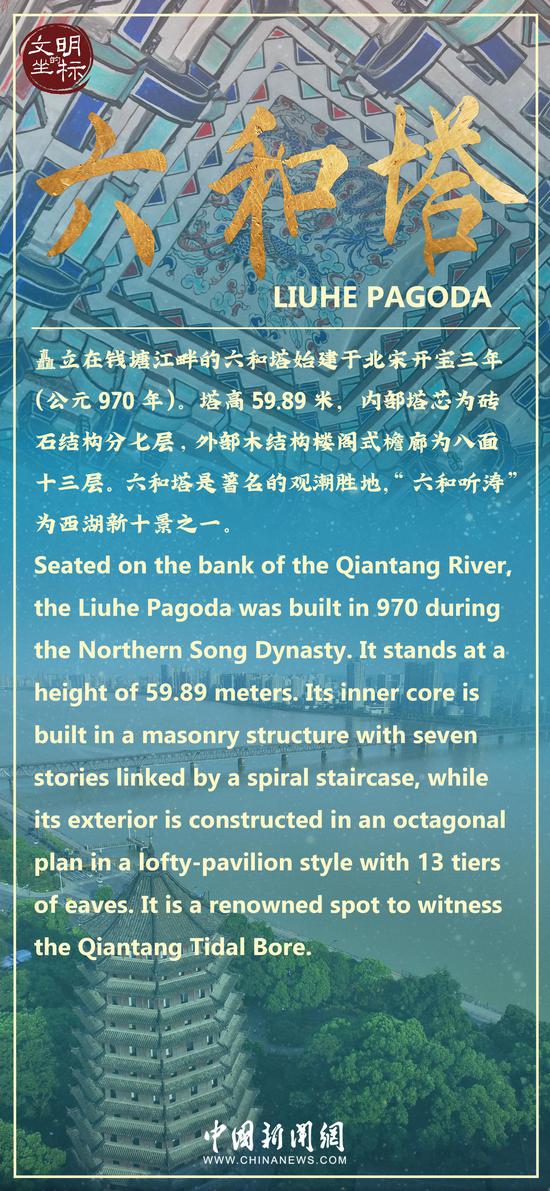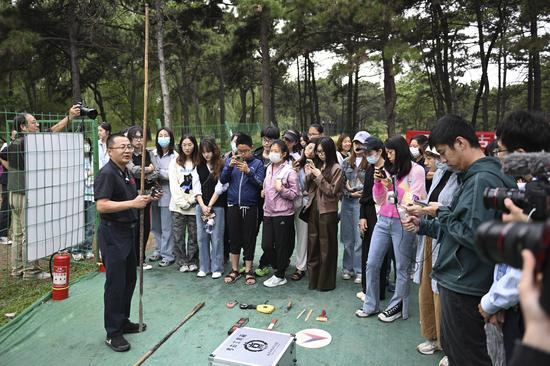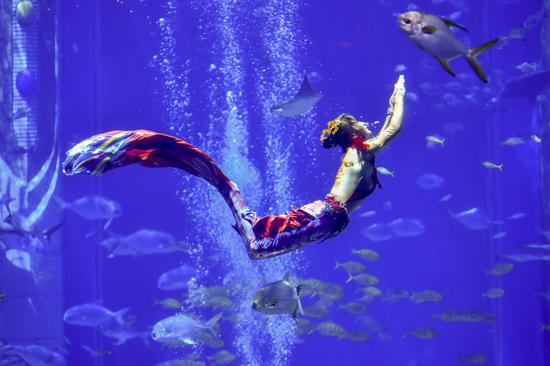
Guoneng Sharing, an offshore wind power facility, is erected in the waters off Fujian province. (Photo provided to China Daily)
An offshore wind power facility in Fujian province uses the spare space at its base to raise fish. It's part of an innovative effort to boost green development in the ocean.
The facility, which is called "Guoneng Sharing", is located in Putian and is the world's first integrated design combining deep-sea floating wind power and aquaculture.
It consists of a floating platform, a 4-megawatt wind turbine and a mooring and anchoring system. The floating platform is a semisubmersible structure with three columns in the shape of an equilateral triangle with a height of 28 meters and a draft of 14 meters.
Inside the triangle is a net cage for aquaculture. The volume of water used for fish farming is 10,000 cubic meters, enough to raise medium-sized fish fry for more than a year.
To maintain safe and stable operations at sea, the platform is moored with nine anchor chains, each approximately 431 meters long, with each column connected to three mooring cables.
"We chose Putian because it has rich wind resources. Now the equipment is being adjusted and tested. It is expected to generate power around the end of this year," said Feng Xiaoxing, deputy chief engineer of Jiangsu Longyuan Zhenhua Marine Engineering Co, which developed the facility.
At full capacity, it will produce 20 million kilowatt-hours annually to serve needs across the country, he said, adding that the equipment can be operated by remote control or in fully automatic mode.
"Raising fish requires a large amount of water, so by making use of the spare space below the floating platform we can improve utility efficiency and maximize the benefits. Also, the deep sea has good water quality for fish farming," he said. The primary fish to be raised and sold are yellow croakers.
The project created a new model to "produce green products underwater and clean energy on water", offering an example of sustainable comprehensive utilization of coastal areas for the country to realize the unity of ecological, economic and social benefits, experts said.
With a weight of 4,900 metric tons and a longer tower barrel than an ordinary wind power project, it caused great challenges in transportation and handling and brought difficulties to offshore towing and navigation safety assurance work.
The floating platform and the 4MW wind turbine completed assembly at the Jinjing wharf in Pingtan, before being towed to Putian and connected to the suction anchor buckets in late September.
"To ensure orderly progress of the integrated wind and fishery project, we provided one-on-one services, guiding the construction company to optimize navigation safety plans before installation, and efficiently handling permits for water-based and underwater activities," said Wu Jianbi, director of the navigation management office of the Putian Maritime Safety Administration.
The maritime department also arranged for on-site patrol boats to conduct surveillance and utilize ship traffic management systems to organize maritime traffic. Staff members issue navigation warnings, reminding vessels passing through the area to avoid and strengthen the management of construction vessels and crew to ensure the smooth progress of the project, Wu added.


















































 京公网安备 11010202009201号
京公网安备 11010202009201号